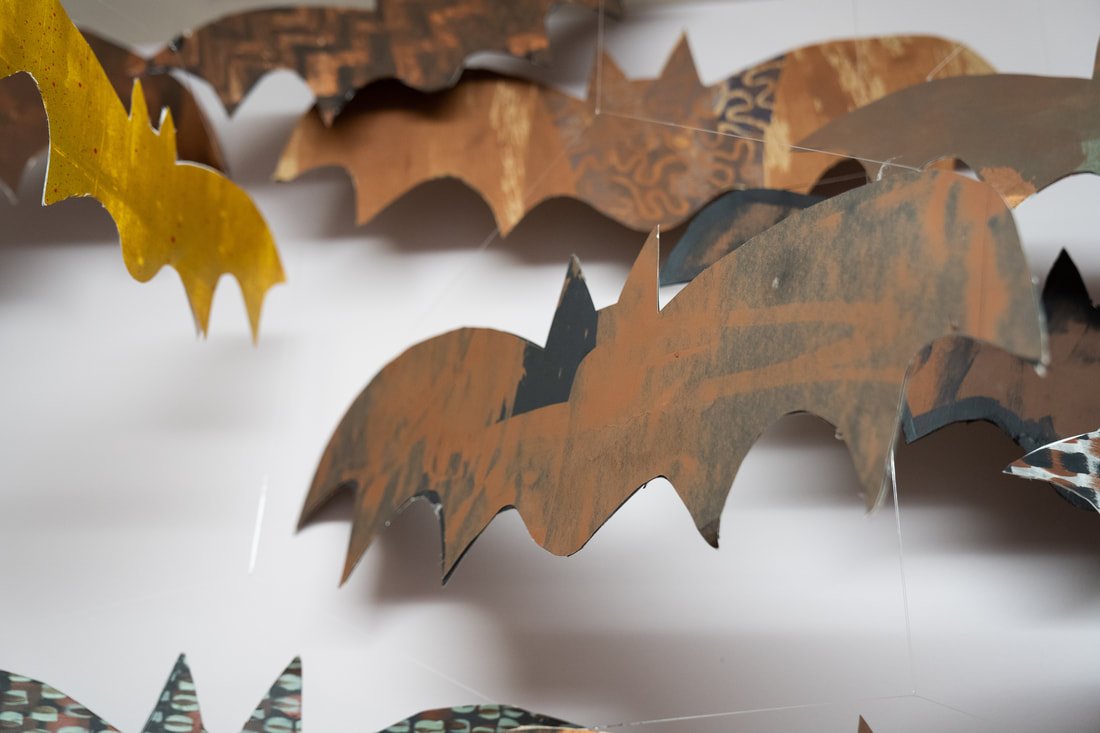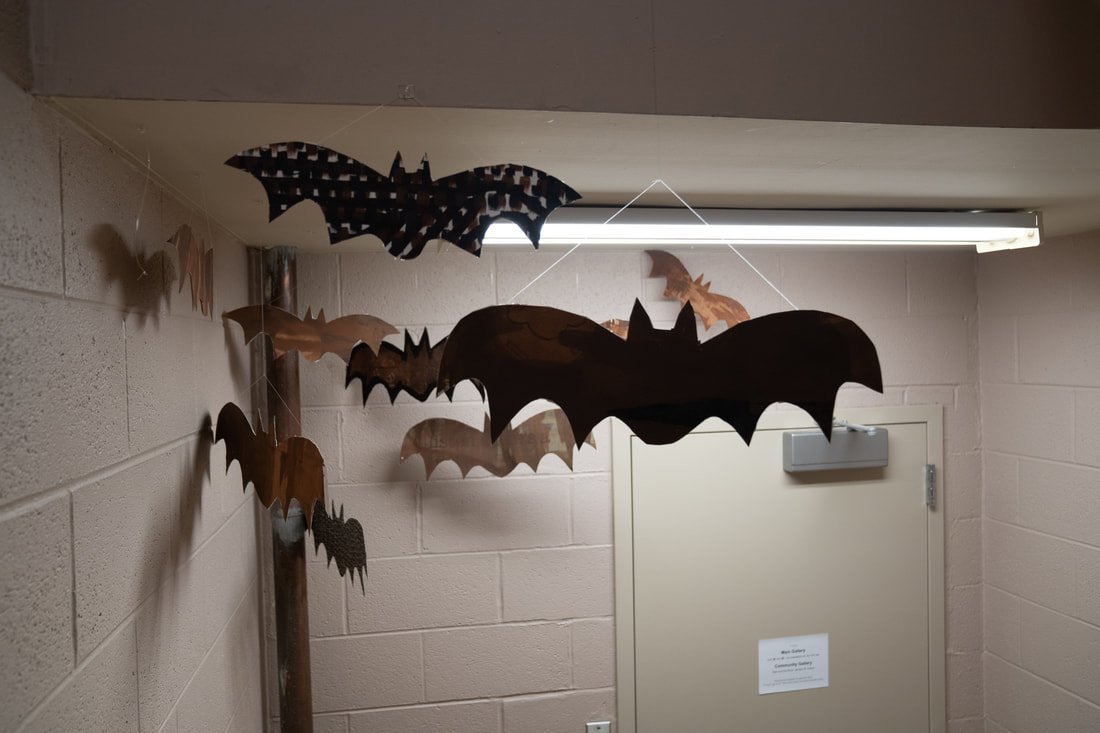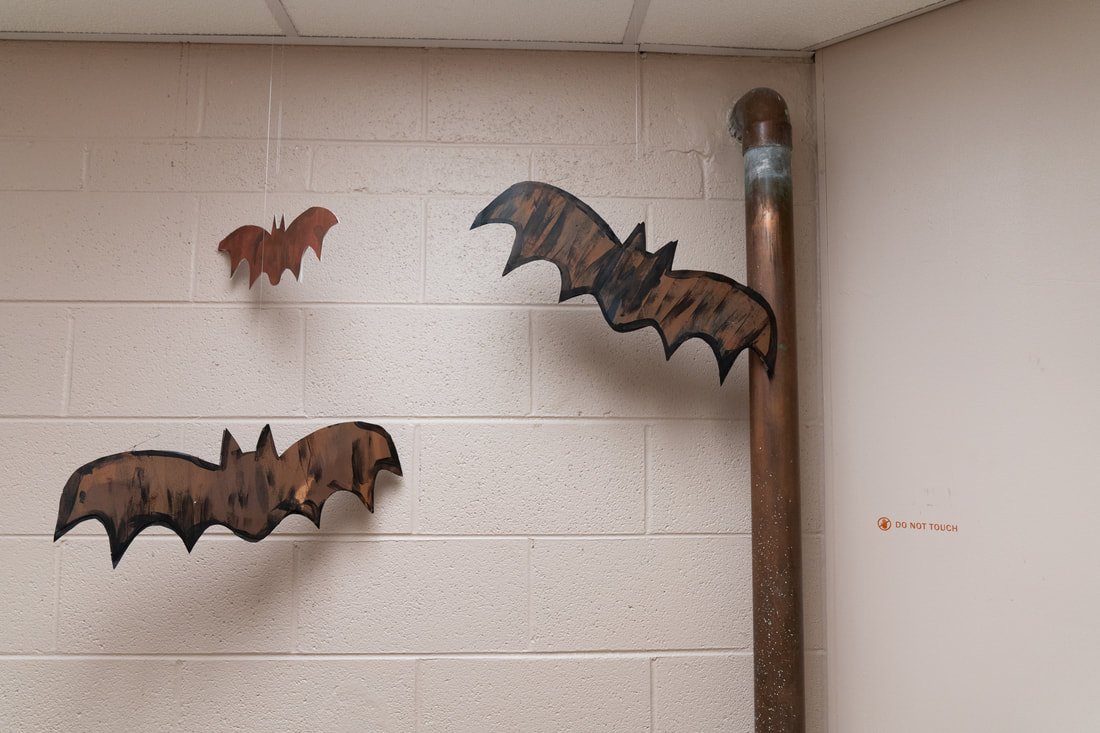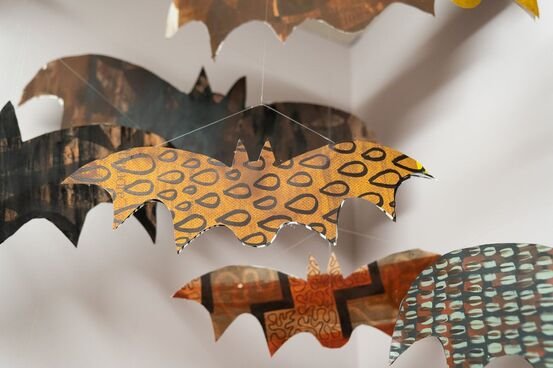
upside
down/
downside up
media: printmaking & painting
location: turchin center for the visual arts, appalachian state university, boone, north carolina
year: 2020
North Carolina is home to 17 species of bats, including the Gray Myotis, the Indiana Myotis, the Virginia Big-eared Bat and the Northern Long-eared Bat, each of which are federally listed as threatened or endangered. Bats are critical to maintaining ecosystem health in communities across the globe, yet the species is often negatively viewed as pests, mythical creatures who are harbingers of doom, and most recently, as suspected carriers of Coronavirus. These assumptions are harmful ideologies that hinder conservation efforts and ignore the important role of bats in local ecosystems.
Unique in their classification as the only flying mammal, their contributions to local environments and health/medicine are also unparalleled. Bats consume harmful agricultural pests including mosquitos (up to 7,000 in a single night!), moths, cockroaches and gnats, so more bats equal less bug bites! They are also critical for their pollination of hundreds of species of food plants and flowers, and the accumulation of their excrement, known as guano, disperses seeds to regenerate plants and trees, and also contains nitrogen, phosphate and potassium, which acts as an essential fertilizer for plant growth. Guano also enhances biodiversity in cave ecosystems, dispersing nutrients that support many bacteria, fungi, invertebrates and invertebrates. Scientific research on bats explores potential solutions for human issues: as they can carry viruses without getting sick, their ‘super immunity’ has important applications for disease resistance; while their echolocation navigation sheds light on solutions for visual impairment. Lastly, like many of their animal counterparts, bat colony ecotourism brings social and economic benefits to local communities.
As populations are mired by climate change, predation, habitat loss, human conflict and pathologies, the conservation of bat species through habitat protection is essential. Addressing these issues is both a natural and social science issue, and rethinking our negative assumptions and superstitions might combat a decline in the abundance of bats in our region and around the world.









